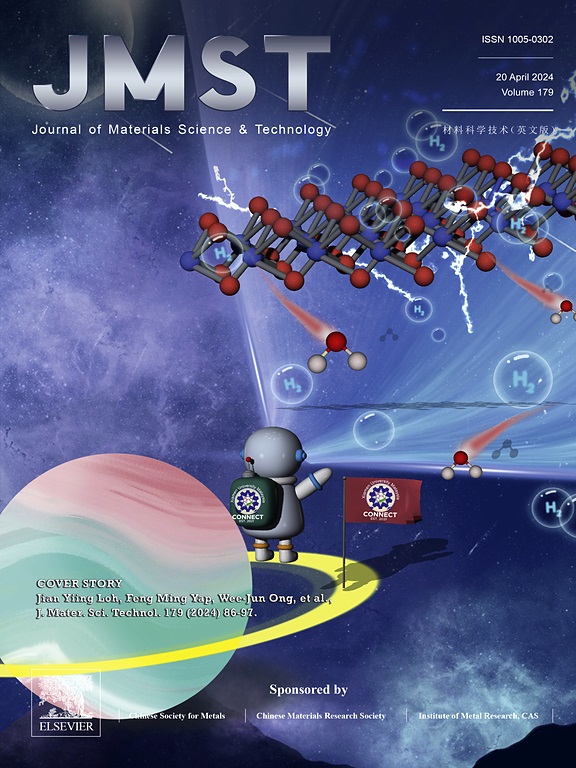Mechanism of interfacial Si enrichment in hindering Fe-Zn alloying and its morphological evolution during annealing in Zn-coated Si-bearing steels
IF 11.2
1区 材料科学
Q1 MATERIALS SCIENCE, MULTIDISCIPLINARY
引用次数: 0
Abstract
Retained austenite plays a significant role in third-generation advanced high-strength steels (AHSS 3. Gen.), renowned for their excellent combination of strength and ductility. Silicon (Si) is a key element in stabilizing retained austenite. However, it introduces challenges in galvannealing and welding processes in Zn-coated steels, such as inhibited Fe-Zn alloying and increased susceptibility to liquid metal embrittlement (LME). This study investigated the mechanism of Si enrichment at the Zn/steel interface and its role in suppressing Fe-Zn interdiffusion during annealing. Using advanced techniques such as high-resolution transmission electron microscopy and atomic probe tomography, and Thermo-Calc DICTRA simulations, we analyzed the diffusion behavior and microstructural evolution in Zn-coated steels with varying Si contents. Si, driven by its low solubility in liquid Zn and Fe-Zn intermetallic phases, accumulates at the interface, forming a Si-enriched region that significantly suppresses Zn diffusion while permitting limited Fe diffusion. Numerical simulations revealed that the Si-enriched layer forms via the drag effect of the Fe-Zn reaction line, progressively concentrating Si at the interface as Zn diffuses. As annealing progresses, the morphology of the Si-enriched region evolves from layered, cloud-like structures to droplets and elongated dendritic forms, driven by Zn penetration and Fe consumption. These findings provide novel insights into the role of Si enrichment in mitigating LME and optimizing the Zn-coated AHSS 3. Gen., paving the way for advancements in automotive material design.

求助全文
约1分钟内获得全文
求助全文
来源期刊

Journal of Materials Science & Technology
工程技术-材料科学:综合
CiteScore
20.00
自引率
11.00%
发文量
995
审稿时长
13 days
期刊介绍:
Journal of Materials Science & Technology strives to promote global collaboration in the field of materials science and technology. It primarily publishes original research papers, invited review articles, letters, research notes, and summaries of scientific achievements. The journal covers a wide range of materials science and technology topics, including metallic materials, inorganic nonmetallic materials, and composite materials.
 求助内容:
求助内容: 应助结果提醒方式:
应助结果提醒方式:


